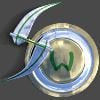How to prevent part of a geograft following figure morphs?
 Silent Winter
Posts: 3,635
Silent Winter
Posts: 3,635
in The Commons
I've made a geograft that replaces the lower body of G8M (from halfway down the hip to the ground).
I obviously need the part joined at the hip to follow G8M's morphs, but I also need anything below that to NOT follow the morphs (as it causes weird distortion). So not following the leg/feet morphs (or those parts of FBMs).
I have a feeling it's to do with rigid-follow nodes but I can't figure out how to make it work.
Is there a tutorial (or a nice simple step-by-step answer) that can help me?
Cheers,
SW 


Comments
A Rigidity Group, not Rigid Follow Nodes. Adding a Rigidity Group with the Geometry Editor will stop the selected areas from taking projected morphs, though you can set one or more reference polygons so that it would follow overall changes in sale or the like.
The Rigidity Groups are a bit hidden because they can only be created with the Geometry Editor in Vertex Selection mode. GeoGrafting is a very advanced part of Daz Studio and not covered in tutorials but I try to explain what I learned about it. I try to keep this a "nice simple step-by-step answer" you where asking for. I hope this is easy to understand and I wish you the best with your GeoGrafting project.
Thanks to both of you for the answers :)
That step by step is perfect Syrus_Dante - thanks for the time and effort
I'm used to using the geometry editor, but I'd never have guessed I'd need to select the verts instead of the polys - it all makes sense now!
I'll give this a go at weekend.
Thanks again,
SW
Worked perfectly - thanks again :) :)
Ok - now I have a related problem:
I have a geograft 'armoured helmet' (is best I can describe it) - It's attached to the head and has solid-metal with eye-slits over the face (obviously I need that to not deform much). I can do the rigidity group as above, but then that part seems to stick in place - if I add a morph to the figure that makes it taller, the top of the helmet (not in the rigidy group) goes up but the face-plate stays where it is (stretching the mesh).
Any ideas? It's fitted to and parented to the head. The follow-group can reference the head bone or not with no change.
Maybe it is not the best idea to create a geograft 'armoured helmet'. How do you want a solid-metal helmet adapt to a character shape? I would parent the helmet to the head and then scale it until the head fits inside. OK I guess its some creature head shape that the helmet isn't inteded to fit to. In this case you could also use a 3D sculpting app to create a fitting morph.
Otherwise to fix the issue you have, I would have a second look at the Rigidity Groups Editor settings and also at the morph that makes the figure taller. I don't know maybe you need to unfit the geograft once before the altered Rigidity Groups Editor settings gets applied. There may be an issue with the taller morph itself that it dosn't adjust the head bone - hint Joint Editor: Adjust Rigging to Shape.
Unfit the helmet and in the Parameters pane find the generated "autofollow" morph that makes the figure taller and turn it up manualy to see if there are distortions. And don't forget you have to Clear Generated Morphs everytime you've adjusted the settings. I also had situations where the Clear Generated Morphs for some reason didn't work and I had to delete the generated morphs manualy.
Maybe also have a second look at the Geometry Editor - Rigidity Group: References. For the References in this case I would select maybe only two vertices somewhere on the forehead area of the helmet and see if your "face-plate" Rigidity Group follows that. With the vertices marked as References you basicly pin the Participans in the Rigidity Group to follow the shape of the "host" figure in this case the forehead of the genesis figure. It could be practical to add almost all the rest of the helmet to the Participansnot just the face-plate. Otherwise I have no idea why this shouldn't work.
Thanks - I'll give that a try :)